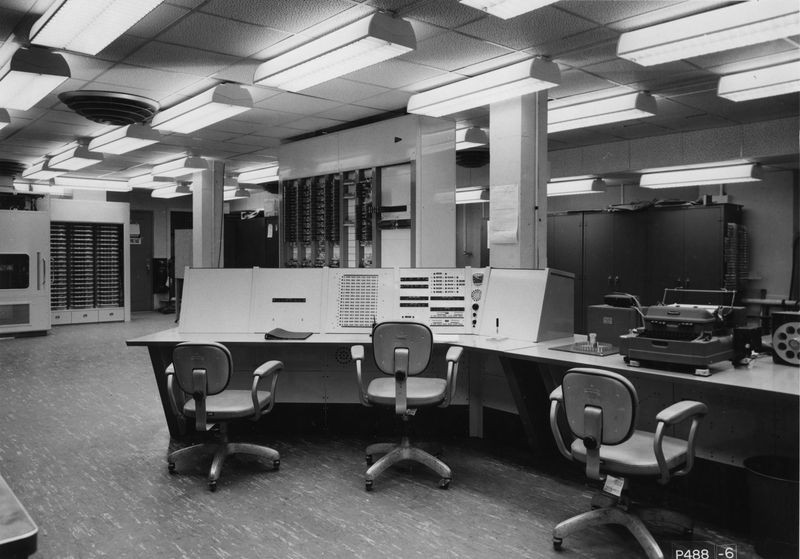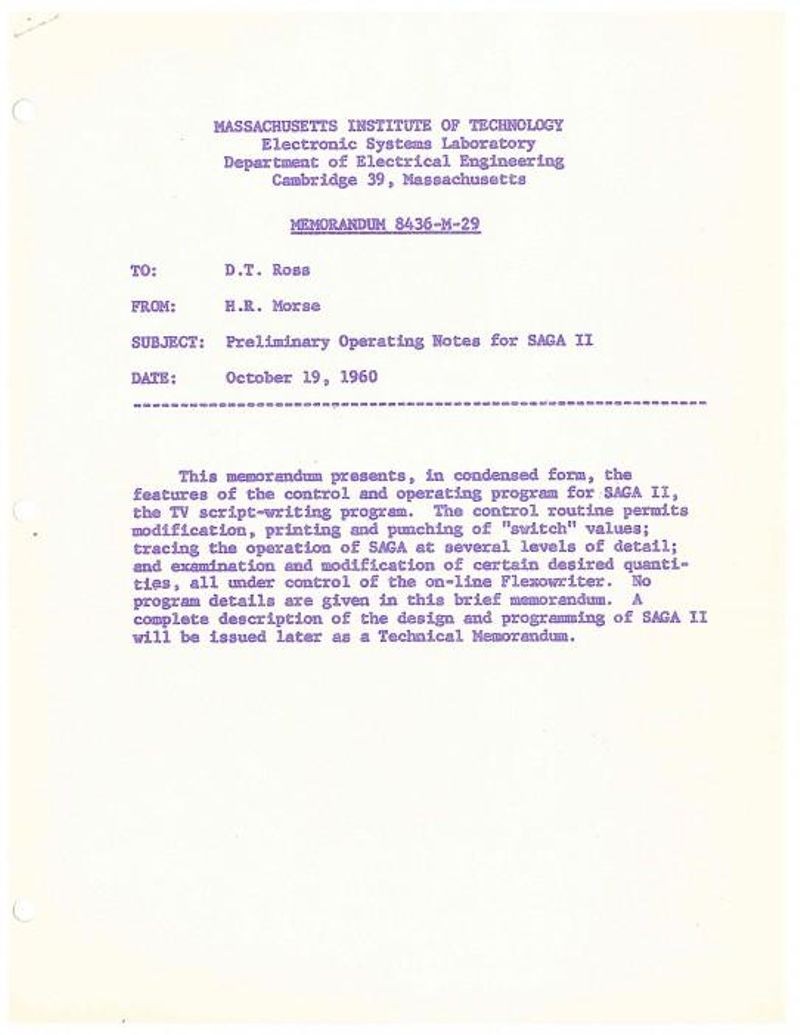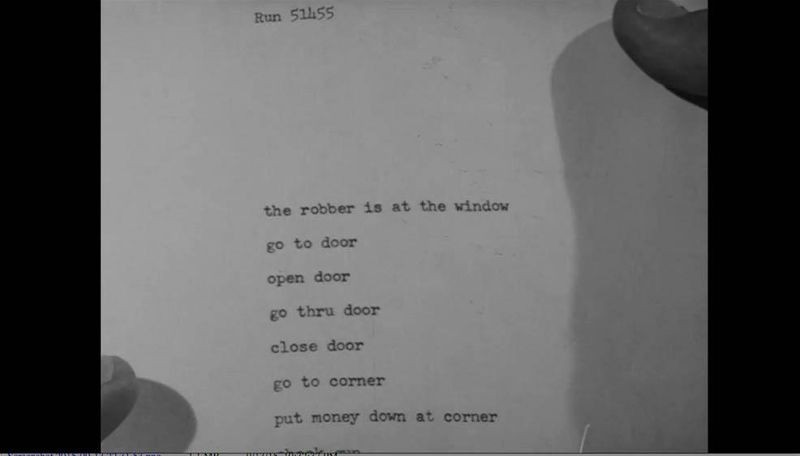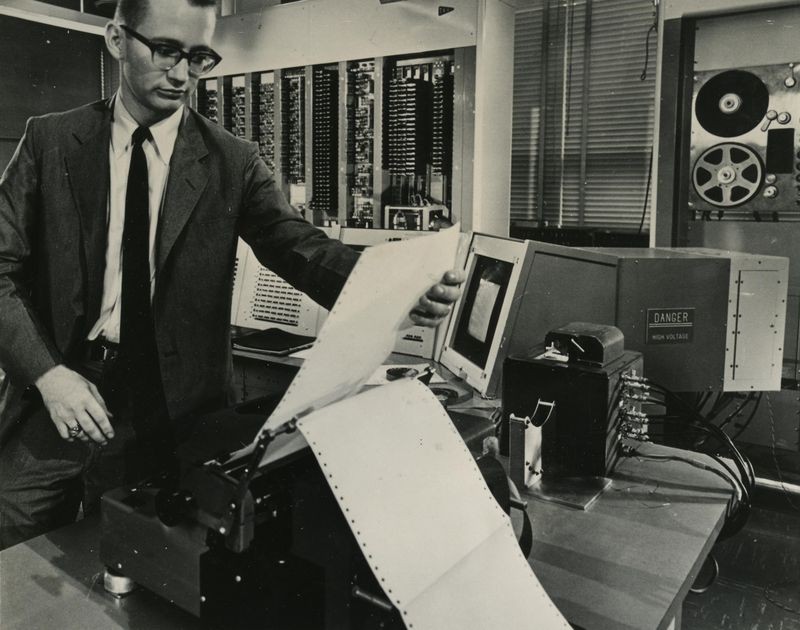

A still from Sunspring (2016), created by Oscar Sharp and Ross Goodwin. Image: GeekyTyrant.
In my other life, I watch a lot of short films, both to coordinate film festivals and for my personal blogs. I’ve probably seen fifteen thousand short films over the last decade, and the level of technical sophistication and artistry in cinematography, editing, sound design, and effects gets more advanced every year. Some films have even given lighting, editing, and camera decisions over to algorithms, like Lars Von Trier’s The Boss of it All.
In April 2016, filmmaker Oscar Sharp and NYU artificial intelligence researcher Ross Goodwin teamed up to create the short film Sunspring. Goodwin created an AI bot called Benjamin to write the script, and Sharp filmed it as a part of the SCI-FI-LONDON 48 Hour Film Challenge. The resulting short is surrealist science fiction at its trippiest, and after Ars Technica released it in June 2016, it became a massive hit. It was impressive, but it wasn’t exactly something new. In fact, the exact same concept had been done before—in 1960.

The Transistorized EXperimental computer zero, or TX-0, one of the earliest transistor computers. Collection of the Computer History Museum, 102693338.
In 1960 the Massachusetts Institute of Technology (MIT) celebrated its 100th anniversary. In that first century, many of the most significant figures in the history of computing had passed through MIT as students, professors, or researchers. In honor of the occasion, the CBS television network created Tomorrow—The Thinking Machine, which celebrated MIT’s computer and robotics projects, especially MIT’s most impressive and then-recent creation—the Transistorized EXperimental computer zero, better known as TX-0.
With a 32 KB of memory and more user-interactive elements than any previous computer, TX-0 was something that MIT could certainly brag about. But demonstrating the technical capabilities of a computer, like TX-0, to a television audience who may have little or no technological knowledge can be difficult. It’s important to show the capabilities of the machine by using methods and highlighting features that are easily identifiable and relatable so that a deeper discussion about the technology can develop gradually. Often, games or graphics display programs were used during demos to relate to general audiences, but the team at MIT decided to show the TX-0′s capabilities via text by producing a film. Doug Ross and Harrison “Dit” Morse developed a program for that could write simple scripts following a set of rules.
Video: The Thinking Machine. Credit: techtv.mit.edu. Film to HD transfer courtesy of MIT 150. MIT Museum Collections.

Preliminary Operating Notes for Saga II, the program that created the scripts for Tomorrow—The Thinking Machine.
Genres like science fiction, horror, and Westerns all operate on a system of rules and tropes that are easily mappable. Creating a story in a genre such as a Western isn’t too difficult, but setting the rules to make those scripts actable is quite difficult. A screenwriter will understand that if a robber enters a room, the gun in his holster comes in with him. That is not the case with a computer. It has to be told that if a character is holding the gun, they keep holding it until they put it down. Morse and Ross accomplished all of this in a program that ran 13,000 lines of code. The ensuing set of film scripts, called Saga, are short, silent Western pieces with two characters and all the markers you’d expect to see in any Western.
Following a lively discussion between Tomorrow’s host, David Wayne, and MIT’s Jerome Wiesner, the head of the electronics research labs, as well as interviews with luminaries such as Claude Shannon, the TX-0 is shown printing the script for an upcoming scene:
The script is simplistic, but the level of detail is immense compared to what a screenwriter would traditionally write:

Doug Ross holding the script for a version of Saga created by TX-0.
Because TX-0 had none of the innate knowledge of the human screenwriter, its script had to be more detailed to deal with each of the components a human writer would consider an individual action. As this playlet goes on, it tells a coherent story—a robber returns with his money, which he fondles in the corner, drinks a little whiskey, and is then approached by a sheriff who kills the robber in a shoot out. A very basic story, but it fulfills all the rules—A good guy, a bad guy, gold, a gunfight, whiskey, all of the classic elements of a Western.

Doug Ross wrote the program to create Saga. Collection of the Computer History Museum, 102631240.
Doug Ross, who supervised the creation of the program, goes on to explain the process that TX-0 employed to create the script. The flowchart diagram he used shows exactly the possible paths that TX-0 could use to create differing stories; the version that was first filmed is noted as #38, demonstrating that the program was capable not only of creating a single story, but taking even a very limited scenario and creating several possible outcomes. The program was simply a set of rules describing the basic plot elements, another set that described the possible actions, and then a set of rules that could modify the rules, including one that took the robber’s inebriation from drinking the whiskey into consideration.

Behind the scenes of Saga, the Western written by TX-0. Collection of the Computer History Museum, 102693340.
The second version featured the robber winning in the end, making the program capable of writing a revisionist Western! The story has the same elements—the robber enters, fondles his gold, takes a drink, the sheriff enters, there’s a gunfight, the winner runs off with the gold, and the loser has a drink and then dies. Within that, there are thousands of possible outcomes, though we’re told only produced about 50 were actually produced.
These first two versions are followed by a third scenario, where TX-0 ends up in a loop. The sheriff puts his gun in the robber’s holster, then continually drinks from the bottle of whiskey, while the robber repeatedly spins the cylinder of his revolver. A human screenwriter would almost certainly never make that mistake. The segment is one of the best early examples of early computer creativity. Artificial intelligence research into the arts throughout the 1960s and ’70s would lead to programs such as Harold Cohen’s AARON paint system; the poetry-generating system Racter, by William Chamberlain and Thomas Etter; and later the EMI and Emily Howell music generation programs, by David Cope.

Original program chart for Saga.
Saga provided an easy-to-understand example of computer programming. It is not difficult to show how the rules used in telling the story are analogous to how programs are created to perform other tasks. Tomorrow—The Thinking Machine used the Western segment to expose their audience to more abstract programming concepts and that helped to make the computer seem less mysterious, lessening the fear of them.
Sunspring shared many similarities with Saga. They’re both genre pieces, which allow computer programs to create a narrative within a defined story space. Sunspring used a much more complicated process, and created a full script in traditional screenwriting format, along with the lyrics to a pop song at the end of the film. Saga, though creating shorter pieces and only dealing with the physical actions within the story, was an impressive creative endeavor for 1961, and while work like Boss of it All and Sunspring may be far more advanced in their technological approach, Saga was an important step forward for computer creativity.